Wool Works for Axminster Carpets
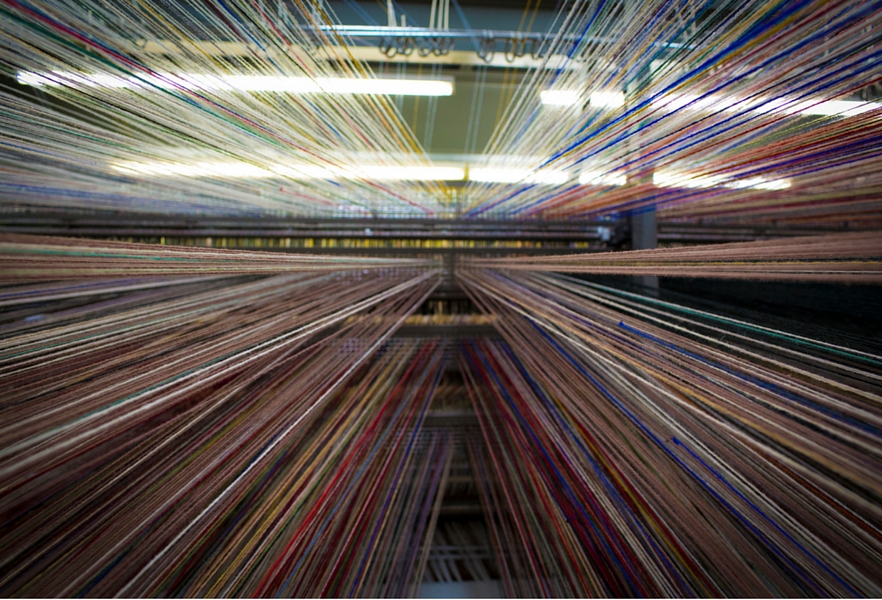
Carpet is something we take for granted as a warm, stylish and colourful way to decorate our homes, but almost every plane, train and automobile we travel in has a carpet too, often made from naturally grown wool.
Wool in carpet is incredibly durable and offers a superior flooring solution which provides long-lasting appearance retention. This is particularly valuable in commercial locations such as airports and casinos but also really important in the busy family home!
Other benefits of wool include:
- Naturally flame retardant
- It won’t drip, melt or give off toxic fumes in a fire
- Resists compression marks and flattening
- Absorbs airborne contaminants
- Provides natural thermal and sound insulation
- It’s easy to clean and care for
Based in Devon since 1755, Axminster Carpets grace the floors of Royal residences, stately houses, luxury hotels and well-dressed homes around the world. We went to their 13-acre site to see how their award-winning domestic and contract carpets are produced from start to finish.
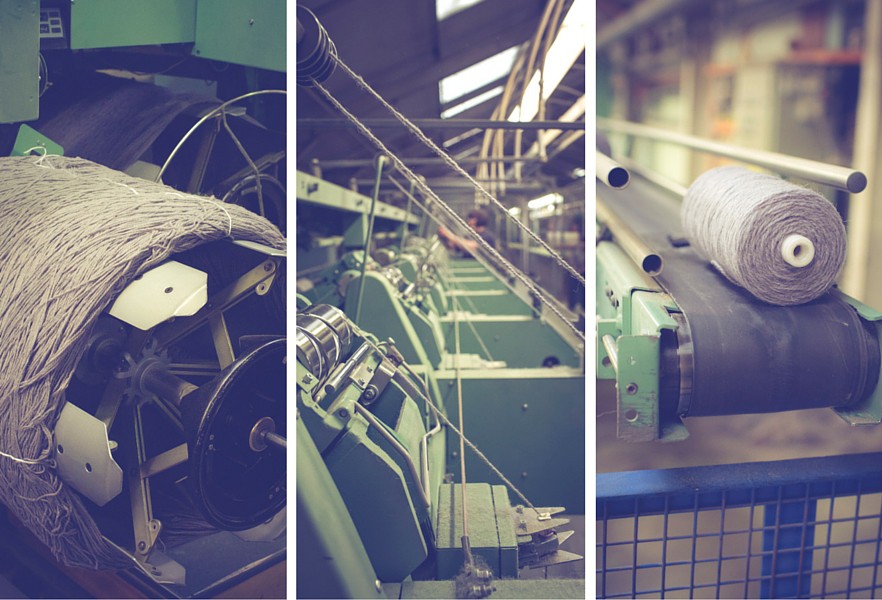 Scoured wool from merchants H Dawson is spun in Yorkshire and delivered in hank form ready for loading onto the hank expander. This machine winds the loose hanks of yarn onto cones or bobbins ready for weaving.
Scoured wool from merchants H Dawson is spun in Yorkshire and delivered in hank form ready for loading onto the hank expander. This machine winds the loose hanks of yarn onto cones or bobbins ready for weaving.
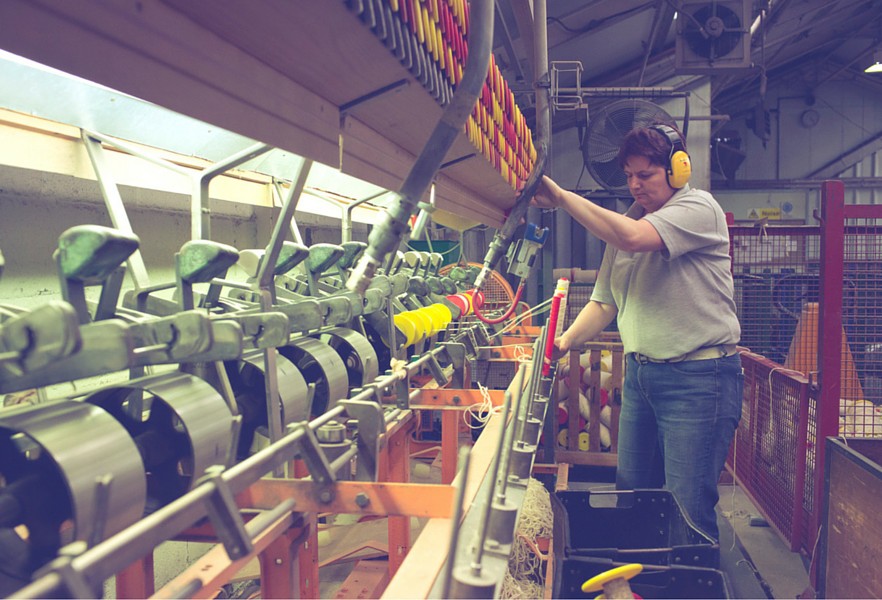 Leftover yarn is brought back up from the looms, wound onto new bobbins and saved for future use. A skilled bit winder can wind 400kg of wool yarn a day onto 1500 bobbins.
Leftover yarn is brought back up from the looms, wound onto new bobbins and saved for future use. A skilled bit winder can wind 400kg of wool yarn a day onto 1500 bobbins.
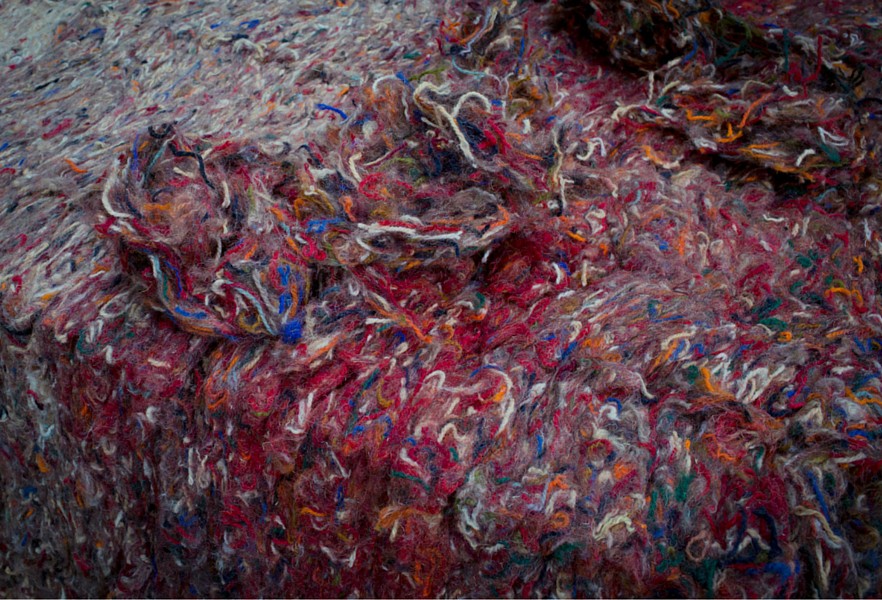 Axminster reuse one hundred percent of the yarn that’s too short to go back up to the bit winder for weaving – this will be used in carpet underlay. In addition to reusing all of their own waste yarn, Axminster also buy in other manufacturer’s waste yarn.
Axminster reuse one hundred percent of the yarn that’s too short to go back up to the bit winder for weaving – this will be used in carpet underlay. In addition to reusing all of their own waste yarn, Axminster also buy in other manufacturer’s waste yarn.
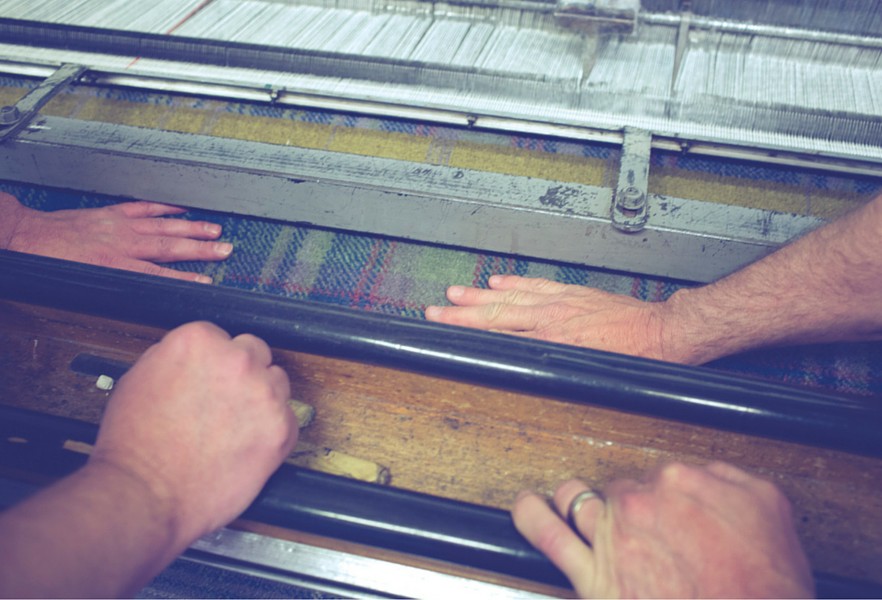 Carpet weaving is a highly skilled trade. An apprentice weaver has up to six months training before they’re allowed to stop and start a loom and won’t be weaving on their own for five years.
Carpet weaving is a highly skilled trade. An apprentice weaver has up to six months training before they’re allowed to stop and start a loom and won’t be weaving on their own for five years.
Technology has reduced the time required to learn the production process, in the past a carpet weavers apprenticeship would last for up to 15 years.
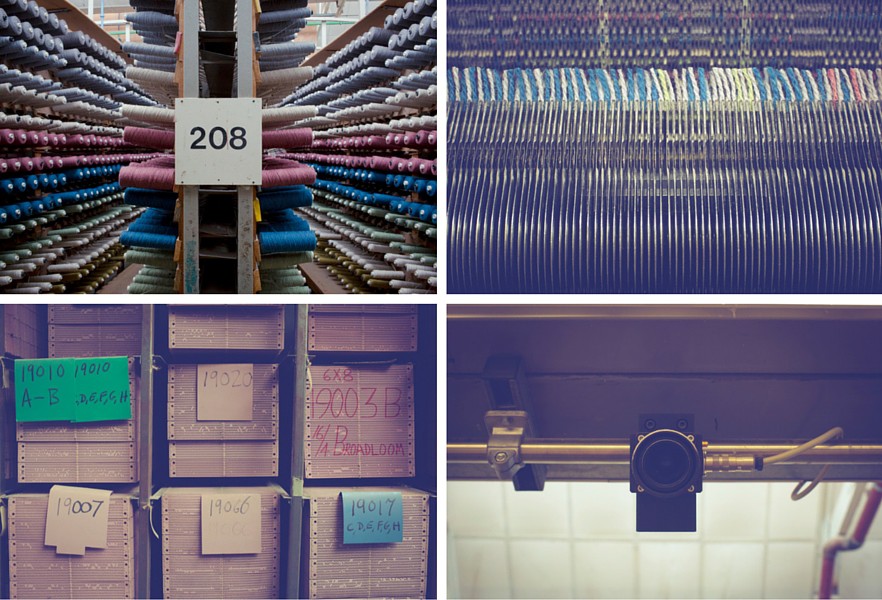 On the Axminster system the weaver loads the jacquard cards onto the loom and ties all the bobbins onto the back of the loom, this task can take one person up to 90 hours before weaving starts.
On the Axminster system the weaver loads the jacquard cards onto the loom and ties all the bobbins onto the back of the loom, this task can take one person up to 90 hours before weaving starts.
Cameras monitor the loom and spot breaks in the yarn, when this happens the weaver uses a tool called a ‘podger’ to feed the thread back.
As the carpet is woven long blades cut the top of the tufts off to give a uniform length and appearance. The carpet will be sheared again as part of the final finishing process at the end of the production line.
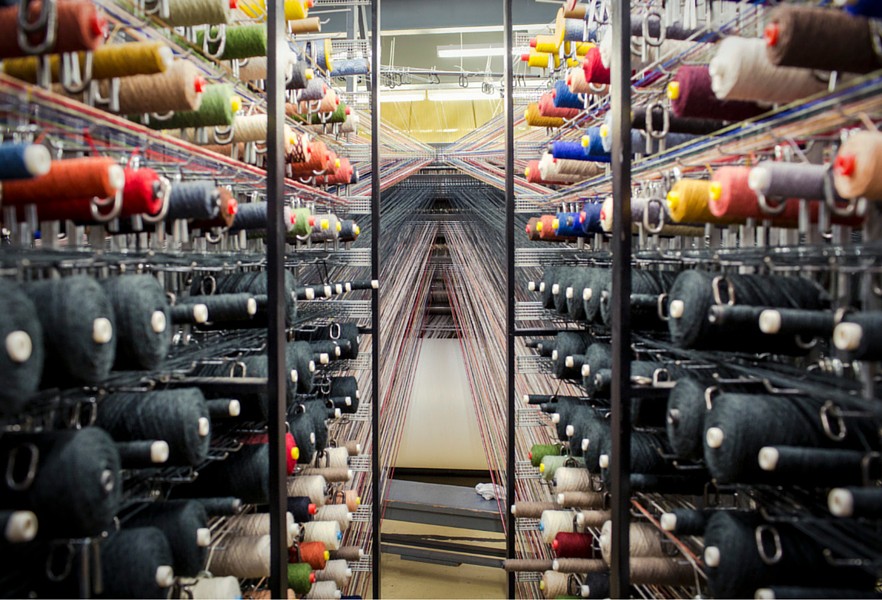 The Wilton system uses weights at the back of the loom to balance the tension of the yarn. The technicians must learn which weights to use, these vary according to each individual design and installing them forms a critical part of the process.
The Wilton system uses weights at the back of the loom to balance the tension of the yarn. The technicians must learn which weights to use, these vary according to each individual design and installing them forms a critical part of the process.
Weaving, shearing and carpet fitting all rely on the even finish achieved when proper tension is created by the correct use of weights.
Up to 12,240 varying weights are installed by hand, this process requires specific skill and knowledge that can never be automated.
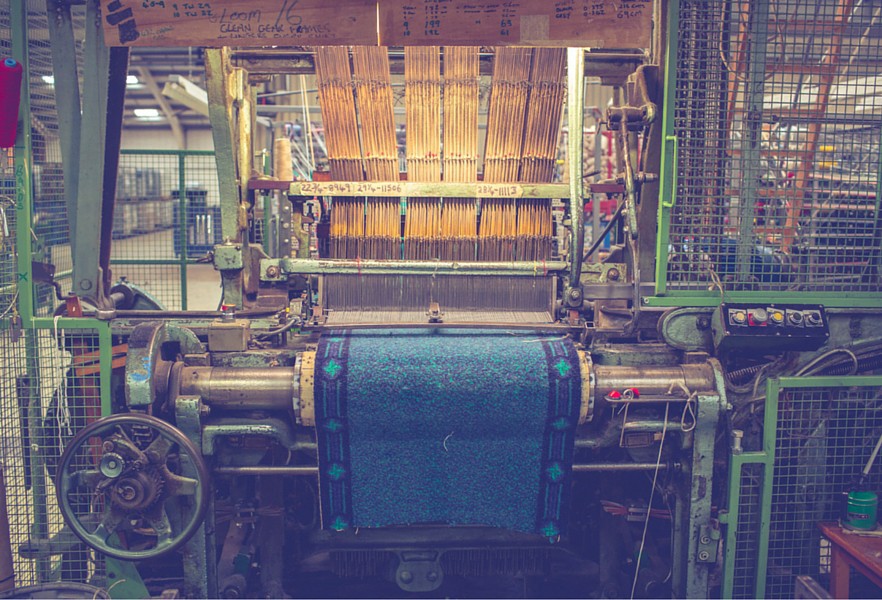 One of Axminster’s Wilton looms has been in continuous service since 1789, its wooden shuttle travels at over 100mph.
One of Axminster’s Wilton looms has been in continuous service since 1789, its wooden shuttle travels at over 100mph.
Once the carpet is woven it passes over to an inspection table for the picker to inspect and mend faults.
Another highly skilled job, it takes a year to be properly trained to repair small holes.
Whilst automation has made the job easier, a picker is able to invisibly insert missing tufts by hand to the same standard as the mechanical loom.
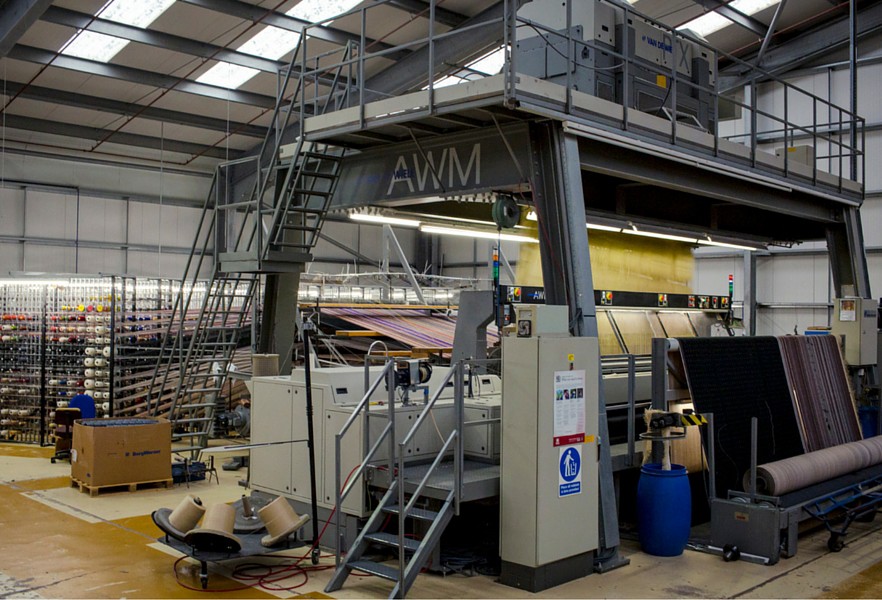 A skilled picker can identify which of Axminster’s 30 looms has produced a particular roll of carpet as each has its own unique ‘fingerprint’.
A skilled picker can identify which of Axminster’s 30 looms has produced a particular roll of carpet as each has its own unique ‘fingerprint’.
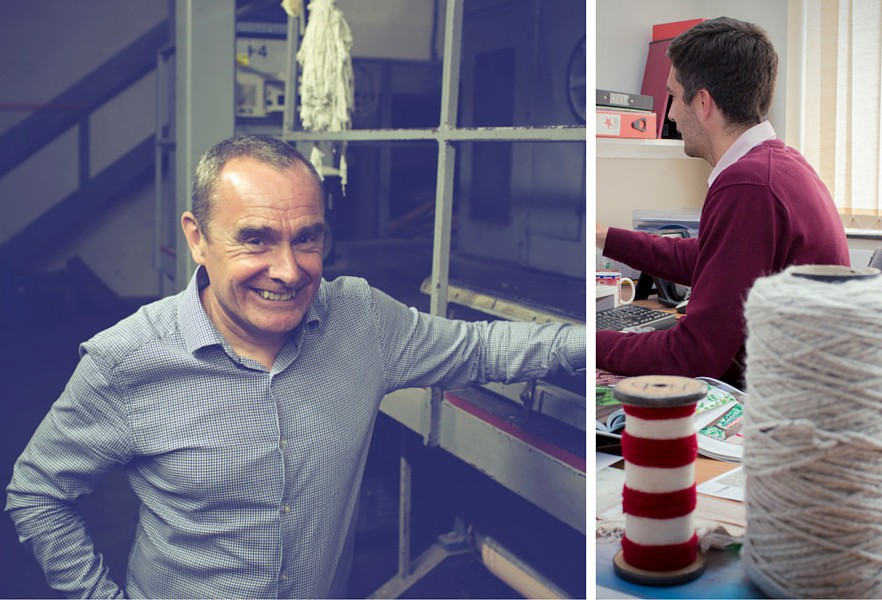 The creative team always design in wool, it offers a clarity of colour and certainty of finish that not other material can give, because dye is absorbed into the core of the fibre.
The creative team always design in wool, it offers a clarity of colour and certainty of finish that not other material can give, because dye is absorbed into the core of the fibre.
Design Director Gary has a development loom where he experiments with new ideas that can be produced in very short runs for pre-production and media samples.
New collections are released at trade shows such as Harrogate and Wool Floor Show London, the first dedicated show for the wool flooring sector.
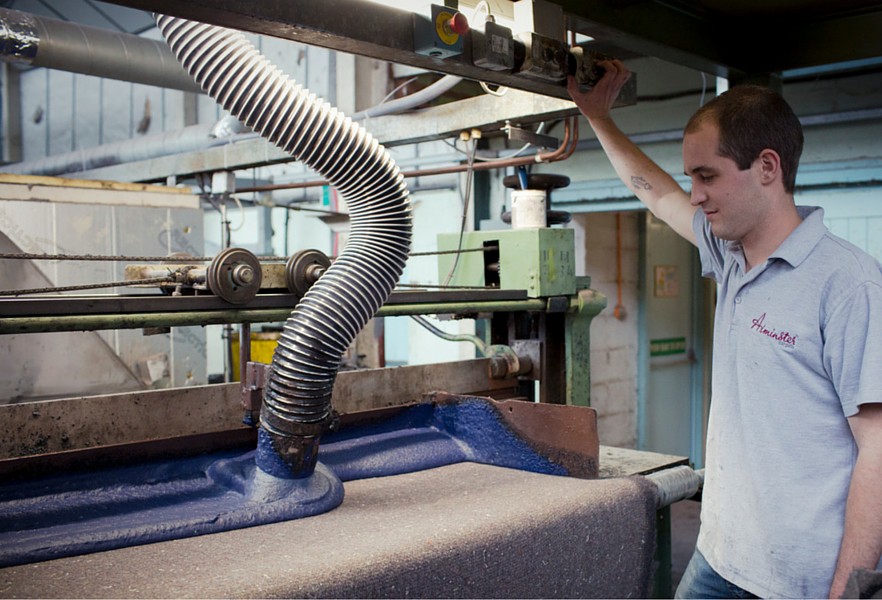 Axminster produces an industry leading three layer underlay which uses all the waste the factory produces.
Axminster produces an industry leading three layer underlay which uses all the waste the factory produces.
The bottom layer is comprised of recycled plastic. To this, multiple layers of waste wool are added and felted to form a soft bouncy mid layer.
The underlay is completed with a layer of recycled latex produced to order, thus minimising waste, by a UK company.
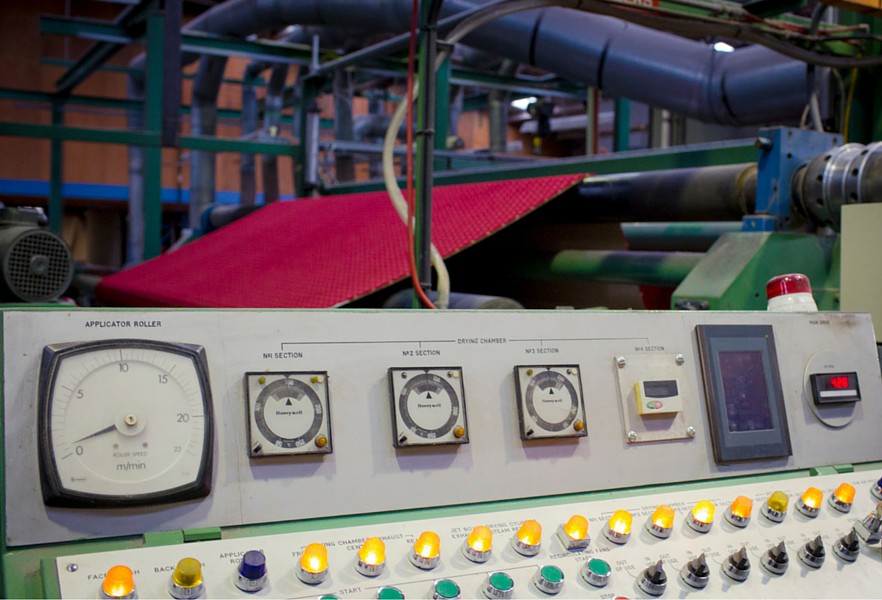 The final process in the production line starts with another shear to the top of the pile which ensures the very best even and luxurious finish.
The final process in the production line starts with another shear to the top of the pile which ensures the very best even and luxurious finish.
This is followed by the application of an adhesive that seals and finishes the back of the carpet.
The technician operating the shearing machine is so attuned to what he’s doing he can pick up faults simply by the sound the blade makes as it passes over the top of the carpet.
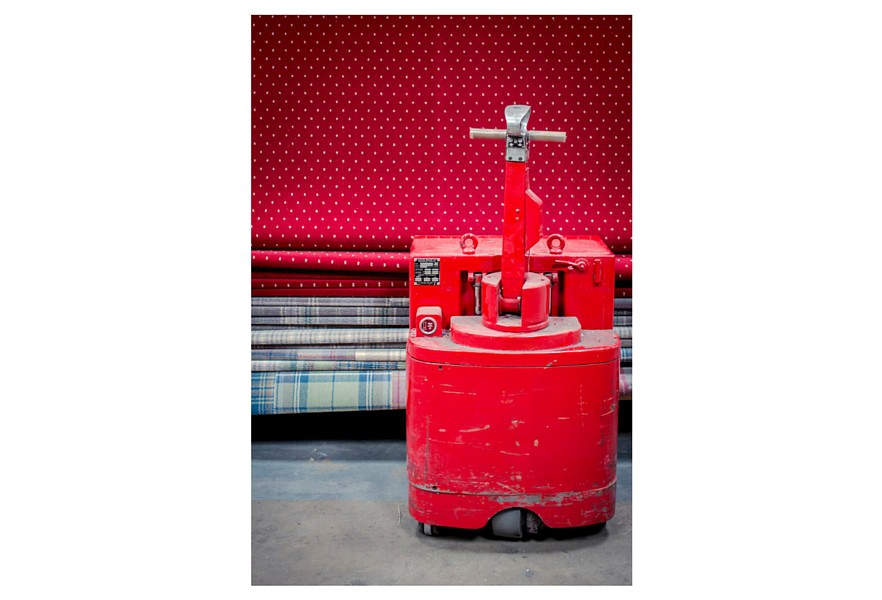
So there you have it, how to make a carpet! We really enjoyed this trip to Axminster, the people who work here are highly skilled technicians and passionate about the benefits of using wool.
Seeing them working at first hand reminded us of the importance of championing local manufacturing in order to maintain vital skills for future generations and provide support employment and opportunities in our communities.
If you’d like us to visit your wool manufacturing business for a future Wool Works feature get in touch, we’d love to hear from you!
Here’s how you can contact us:
#WoolWorks #ChooseWool #Wool #Carpet




